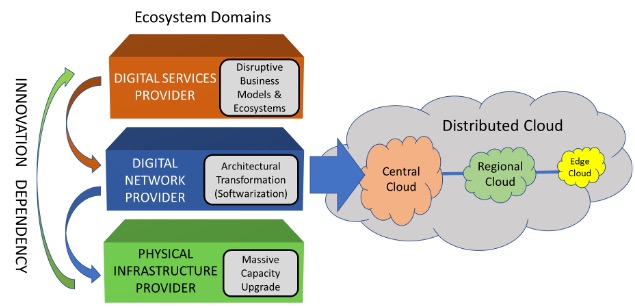Addressing the Telecom Innovation Deficit
By: John Cioffi, Don Clarke, Mark Cummings, Ph.D., Yuri Gittik, Klaus Martiny, Vance Shipley, Katarzyna Wac, Peter Willis

Telcos have lost much of the capability to influence the evolution of the technologies on which they depend. They have become aging monocultures; disruptive innovators have left the industry and innovation is outsourced. The result is overreliance on a small number of large vendors and diminished participation by smaller vendors, resulting in a deficit of innovation that is harmful for telcos and the societies that depend on them. Innovation arises in unexpected ways and the telecom industry, despite its maturity, should not be considered immune from the benefits.
The Telecom Ecosystem Group (TEG) is a global initiative seeking solutions to this problem. In July 2020 we published a white paper inviting comment on how to address it, followed by a series of colloquiums to collect opinions from experienced individuals. This article details the recommendations that emerged.
Telecom ecosystem dependencies
We define “ecosystem” as the diversity of players needed to build, maintain, and evolve telecom infrastructures. The figure below depicts one view of the telecom ecosystem. Hyperscalers dominate in the digital services provider domain where competition is high, driving innovation. A variety of players, notably cloud providers, occupy the digital network provider domain. Telcos dominate in the physical infrastructure domain where competition is low (due to the inefficiencies of building overlapping infrastructures), resulting in weak drivers of innovation.

Figure 1: The telecom ecosystem
Click to Enlarge
Telcos could be expected to leverage domain synergies—capabilities in one domain that are beneficial in another but seemingly incapable of realization. Moreover, telcos become barriers to innovation in the dependent domains if their investments in infrastructure are inadequate. For example, the ITU-T estimates that 37 percent of the world’s population still does not have access to the Internet.
How has this happened?
The deficit in telecom innovation has arisen due to the tenets on which telecom networks are built and operated:
- Affordable ubiquitous connectivity commensurate with the demands of society.
- End-to-end interoperability across international boundaries and network islands.
- High reliability, including support of public safety and law enforcement.



















